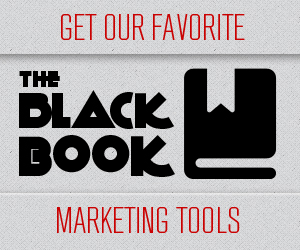Five Sure-Fire Tactics Guaranteed to Make Your Advertising More Profitable
“I don’t know who you are. I don’t know your company. I don’t know you company’s product. I don’t know what your company stands for. I don’t know your company’s customers. I don’t know your company’s record. I don’t know your company’s reputation. Now, what was it you wanted to sell me?”
The late David Ogilvy, often referred to as “The Father of Advertising,” wrote the above copy long ago, to sell advertising for McGraw-Hill business publications. It’s very close to the internal discussion everyone has while reading your advertising today.
Deal with these questions and your ads will all build trust – the key to closing sales.
Here are five ways to get the job done:
1. Use Pertinent Facts
Don’t focus on features – focus on the benefits your customers will see as a result of buying your product or service. Then, create a list of the facts you feel your prospects need to know most, to see those benefits for themselves, and work them into your copy.
Research the facts about your product or service. Contact the company that makes the product, if you’re a reseller. Do the same for products you use, if you sell a service. This will convince someone reading your advertising that you know what you’re doing and help them better decide that your product or service is perfect for them.
2. Use Statistics To Make Facts Sizzle
Whenever possible, use statistics to back up any facts you’ve chosen to include in your message. Statistics make facts more believable. Search Google for research studies on the products you sell or for the products you use to provide any service you sell.
When you include statistics, state them exactly. “23.7%” is a lot more believable than “almost 25%” or “around 23%.”
3. Demonstrate Your Product or Service In Action
One of the most compelling forms of proof you can include in your advertising message is a demonstration of your product or service in action. Treat this like a case study in brief. Rather than merely stating benefits as facts, this enables you to show the prospect the benefits those features will bring them by example.
4. Social Proof Seals the Deal
We live in a socially-connected world. If you can include the name of an actual satisfied customer and demonstrate their results as fact, you’ll help seal the deal. Demonstrations of benefits help sell – but including the actual name of one or more real customers receiving those benefits really makes your case in the mind of your reader.
5. Testimonials Are Gold
Whenever possible, include one or more testimonials from actual customers and you’ll pull in more sales than you ever saw from your advertising before. Testimonials are the actual words of real customers, expressing their delight with your product or service. Nothing has more power to close sales.
If you don’t have any testimonials now, definitely start collecting them. Contact your existing list of satisfied customers and ask them for testimonials. Offer a prize drawing for the best genuine testimonial provided and you’ll get loads of testimonials fast. Also send new buyers a questionnaire after they purchase, asking them for a testimonial as one of the questions.
Make sure you get permission and use full names in your social proof or testimonials. “John. Q. Public” provides solid proof that the person or testimonial is the genuine – definitely more so than “John, Reno, NV.”
Follow these five steps – or combine as many as you can – and all of your advertising will take on new life and start pulling in far better results than you’ve been seeing.



